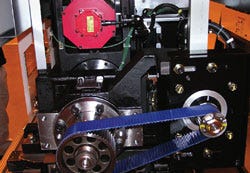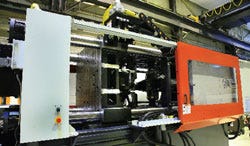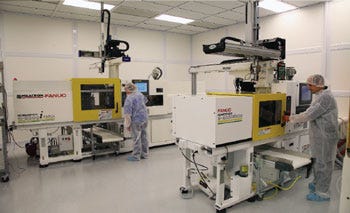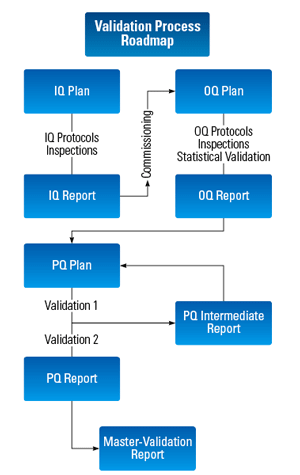All-electric molding machines can be more effective and efficient than their hydraulic counterparts.
June 23, 2011
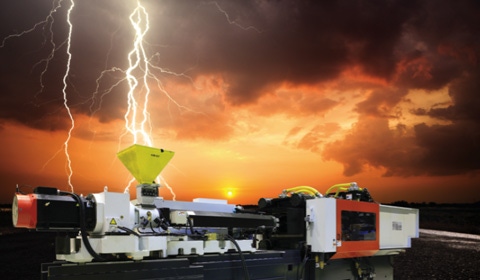
Medical devices are among the most challenging products for injection molders to work with. In addition to the constant pressure to reduce cycle times and cost, medical molders must meet stringent FDA specifications, tight tolerances, and sterilization requirements for many of the parts they produce. These challenges are compounded by the use of traditional hydraulic injection molding machines.
Hydraulics are commonly used in the marketplace, selected for their clamping force and, often, for familiarity’s sake. However, they introduce variables and complexities into the process that can negatively impact precision and reliability. All-electric molding machines, on the other hand, make the process more efficient, cost-effective, reliable, and repeatable. They are quicker and cleaner, especially given recent technological advances. It is likely for those reasons that more than half of the injection molding machines sold annually in the United States are all-electric, according to a report by the Society of the Plastics Industry.
This article will examine why all-electric machines are gaining favor with medical molders.
Challenges of Medical Molding
One of the most notable difficulties of processing medical parts is meeting FDA’s framework for process validation. In a new quality system regulation (QSR), FDA defines process validation as “establishing by objective evidence that a process consistently produces a result or product meeting its predetermined specifications.”1 FDA’s requirements also state that
Where the results of a process cannot be fully verified by subsequent inspection and test, the process shall be validated with a high degree of assurance and approved according to established procedures.2
Each manufacturer shall establish and maintain procedures for monitoring and control of process parameters for validated processes.2
Meeting these requirements demands a high level of reliability and consistency. Additionally, many medical products must be produced in cleanroom environments, creating another level of complexity.
|
A low-inertia belt and pully drive help this all-electric machine accelerate and decelerate with precision. |
Several trends are also influencing medical molding. To increase part output, for example, many molders are using high-cavitation molds. This type of tooling is more complicated than traditional processes, demanding a machine that can accept tools that are larger than normal and perform with great repeatability.
Scrap material cannot be reground and reintroduced into the process because doing so would change the physical properties of the part. Thus, many medical molders are switching from cold runner systems, which create a lot of scrap, to hot runner systems, which create less scrap. However, using hot runners typically means switching to larger mold base sizes and smaller shot sizes.
Finally, as with all industries, there is a constant demand to increase efficiency and reduce costs. These considerations make it crucial for medical molders to use the best possible machines to prevent waste, downtime, lost revenue, and unnecessary expenses.
Liabilities of Hydraulic Machines
Hydraulic machines operate with highly complex distributed drives. These consist of control valves, pistons, interconnecting pipes and hoses, and a hydraulic pump driven by an electric motor. The number of parts involved introduces a host of variables (e.g., temperature changes, leaks, oil-pressure inconsistencies, etc.) that can affect how the machine functions.
One major weakness of a hydraulic machine is its reliance on hydraulic fluid, which can create many variables and result in inconsistent operations. Oil requires an intricate filtering system to keep it clean and ensure proper valve operation.
|
The clamp assembly inside this all-electric molding machine operates quickly, translating into short cycle times and boosting productivity. |
Typically, high-precision hydraulic machines used for medical molding use servo valves to increase precision. These require even more complex filtration systems.
Hydraulic machines are not always the best fit for cleanroom environments. Even when leakage is prevented, oil is continuously moving in and out of the oil reservoir. This tends to create a fine, airborne oil mist that can contaminate products and prevent them from meeting sanitization specifications.
Hydraulic machines can take a long time to stabilize upon start-up. They often need to run for more than 20 minutes, with constant tweaking, before they can begin producing parts that meet required criteria.
There is also one other major problem with hydraulic machines: energy inefficiency. In fact, running a hydraulic machine often consumes twice as much power per pound of material processed as an all-electric machine. With daily operation, the cost of production quickly adds up.
An Alternative: All-Electric Machines
Today’s all-electric machines outperform hydraulic machines in terms of efficiency, cost savings, reliability, repeatability, cycle-time savings, and cleanroom compatibility. They’re also quiet and easy to maintain.
Efficiency. Unlike traditional hydraulic injection molding machines, which use energy even while idle, all-electric injection molding machines consume energy only when necessary. This is because, to put it simply, all-electric machines are much less mechanically complex. They are driven by digitally controlled servo motors that operate efficiently and at high speeds. With fewer steps in the process, less energy is lost. All-electric machines often consume less than 50% (and occasionally as little as 25%) of the energy that a hydraulic machine consumes, according to studies by the author.
All-Electric ImplementationThe author recently conducted comparative testing between an all-electric injection molding machine and a closely comparable hydraulic machine. In production, the hydraulic machine used an average of 0.328 kWh per pound of material. The all-electric machine used approximately half as much energy, averaging 0.167 kWh per pound. When factoring in the cost of electricity, the savings can quickly add up.
|
Because all-electric molding machines do not put out an oily mist like hydraulic machines, they are suited for cleanroom operation. |
There is little to no variance between all-electric machines within the same model family. Hydraulic machines, though, must be individually tuned; this creates variation. When a new tool is introduced on a hydraulic machine, the machine must be documented for approval by FDA, a process that can be costly and lengthy. The interchangeability of all-electric machines enables molders to avoid that approval process.
Repeatability. The variable characteristics of oil can make it difficult to achieve high levels of repeatability with hydraulic machines. Hydraulic oil tends to behave differently as temperatures change and the oil becomes dirty. Temperature fluctuation can lead to variations in viscosity and flow throughout the hydraulic system. To combat this, many machine manufacturers incorporate a cycle that preheats the oil when the hydraulic pumps are first started up, reducing the time and energy it takes to warm the oil to operating temperatures. Also, as the oil temperature migrates into the steel valves, pumps, cylinders, and other components, the components undergo thermal expansion and exhibit changes in tolerance, affecting their behavior. As oil becomes old, it can begin to break down. The most common visual change can be attributed to what is known as varnish buildup. Brownish stains can be found in the areas where the oil is subjected to higher temperatures. When removing the spool from the valve body, it is frequently possible to see varnish built up on the lands of the spool.
Conversely, all-electric mechanical drives with servo motion control use absolute encoders, which can detect a shift in positioning as small as 0.01 mm, according to testing by the author. In conjunction with tight machine tolerances, this capability enables precise and repeatable machine operation.
Shorter Cycle Times. Because all-electric machines have independent motors, overlapping motion control is possible, meaning they can perform multiple tasks at once. For example, an all-electric machine can inject plastic while
|
All-electric machines have fewer complex parts than hydraulic machines, making them relatively more reliable. |
simultaneously building clamp tonnage. Hydraulic machines, in contrast, cannot perform multiple tasks without diverting oil and shifting hydraulic valves, making cycle times as much as 0.5 seconds slower than those of all-electric machines, according to testing by the author. All-electric machines can also ramp up to full speed more quickly than hydraulic machines, which have more complex components—a motor, pumps, and valves—to get moving. For example, it is common for a hydraulic system to use more than 10% of the screw stroke to reach full injection speed, while an all-electric machine can typically achieve its top speed in less than 0.05 seconds, according to research by the author.
Hydraulic systems are prone to pressure shock, which are momentary pressure spikes caused by the momentum of the fluid when the flow is abruptly started or stopped. This can cause mechanical failures. Software delays are programmed into the machines to reduce these shocks, making for longer response and cycle times. All-electric machines, conversely, have no fluid, and their motors have natural acceleration and are consistently tuned, meaning that pressure-shock delays essentially do not occur.
All-electric machines also offer an advantage in that their motors are connected directly to their respective mechanisms. When the motor is commanded to change speed, the mechanisms instantly adjust with it. When oil flow is cut off in a hydraulic machine, the inertia of the mechanical action can keep the machine going longer than desired. The only way to reduce this inertia is with an oil braking system, which is situated on the opposite side of the hydraulic cylinder piston. To cut down on the amount of overshoot caused by the mechanical inertia, the software is tuned so that the velocities are scaled far back from the stopping set point. All-electric machines require less distance to stop, and so a higher velocity can be held until the last possible moment, resulting in shorter cycles. This enables the technician to make the adjustments that are necessary to obtain the desired results.
Cleanroom Compatibility. Most all-electric machines are cleanroom-ready upon installation. With no oil, valves, hoses, or other problematic components, all-electric machines do not leak and thus require less housekeeping than hydraulic systems, which must have the ability to breathe when the oil is flowing in and out of their oil reservoirs. As established earlier in this article, this tends to introduce some amount of oil mist through the tank breather into the machine environment, which then adheres to all surfaces.
Limitations. While all-electric machines have several attractive characteristics, they are not always the right solution. One notable limitation is that they tend to have a lower force capability than hydraulic machines. Tool designers occasionally build molds with extra-large openings—without regard to force requirements and pressure—so that material can flow from the machine nozzle into the tool. In these situations, all-electric machines may not be able to provide enough force to fill the mold. However, most of today’s tool designers are aware of this limitation and will readily make design modifications to avoid the issue.
There are several important considerations to successfully implementing the technology in a production setting. As with hydraulic machines, the first step is determining what size machine is needed. In nearly all cases, the size of the mold used will dictate the size of the machine. A mold is typically installed from the top, so a machine must be large enough for the mold to fit between the tie bars. Many OEMs have widened the space between tie-bars to accommodate larger tools. If a tool doesn’t fit, it’s time to consider a larger machine.
Other factors can occasionally affect machine size. Tonnage requirements vary according to the application; OEMs may need to select a relatively large machine that can produce the amount of force to produce a particular part. Shot size and throughput, which relate to the volume of material that can be processed in an hour, can also influence machine size. If an application demands short cycle times, it’s important that the machine can inject enough volume and still provide the necessary level of melt quality.
Installation and Disposal
After the processor provides the tool size and other critical information, the machine manufacturer will help the customer select a machine of the correct size, and guide the customer through the installation process. The manufacturer can help select ancillary equipment, facilitate rigging, hook up electrical connections, and even pour concrete or install a building to house the new machine.
Many applications require the machines to be installed in a cleanroom. When replacing a hydraulic machine with an all-electric in an existing cleanroom, it’s often necessary to reevaluate the voltage of incoming power. All-electric machines require 200–230 V, much less power than it takes to run hydraulics. All-electrics also produce much less heat than hydraulics, enabling manufacturers to use smaller HVAC systems in their cleanrooms.
|
Figure 1. Installation qualification (IQ) and process performance qualification (PQ) protocols ensure molding machines are correctly set up and run. |
The purchase of a new machine often necessitates the disposal of an old one. Old machines that are in good running condition and have a high market value are usually worth selling, either independently or through a broker. The price will be determined largely by its size, brand, and the current marketplace demand. Occasionally, an OEM will even take an old machine as a trade-in if demand is high enough. If the resale value is low, a machine can be scrapped for parts, generally with the assistance of a scrap company.
Validation
The time between installation and production can vary greatly. Parts must be sampled, molds must be qualified, and requirements must be met; the newer the part, the longer the process typically takes. Validation is another variable that can delay the start of production.
As mentioned earlier, the processes for making medical parts generally must be validated. OEMs must ensure that equipment installation qualifications (IQs) and process performance qualifications (PQs) are being met (Figure 1). IQs provide documented verification that process equipment is installed correctly, measurement and monitoring equipment is calibrated, and process equipment operates acceptably at use settings. Similarly, PQs provide documented demonstration that a process is repeatable and effective.
A smooth validation can take just a few days. However, if complications arise, the process can take as long as 6–9 months. However, because of the precision and repeatability of all-electrics, the validation process is almost guaranteed to be shorter than it would be for hydraulics in the same application.
Conclusion
Clearly, all-electric machines can provide numerous advantages to today’s medical molders. While they do have limitations, advanced technology has made them a much better alternative to hydraulics, especially when it comes to maximizing performance in cleanrooms.
All-electric machines provide greater efficiency, cost savings, reliability, cycle-time savings, and cleanroom compatibility and they’re easy to maintain. Implementation is a straightforward process, and choosing the right partner can make it even simpler.
Medical molders are facing pressure to produce better parts at lower costs, and it’s time for many of them to reevaluate their machinery. Hydraulics still play an important role, but the future of the medical industry is quickly passing them by. All-electric machines currently make up half the injection molding machines sold in the United States, and that number will only continue to grow in the years to come. Now is the time to look to this technology as a more efficient, cost-effective means of medical molding.
References
1. Code of Federal Regulations, 21 CFR 820.3.
2. Code of Federal Regulations, 21 CFR 820.75.
Kent Royer is the director of global medical business development at Milacron Inc. (Batavia, OH).
About the Author(s)
You May Also Like
